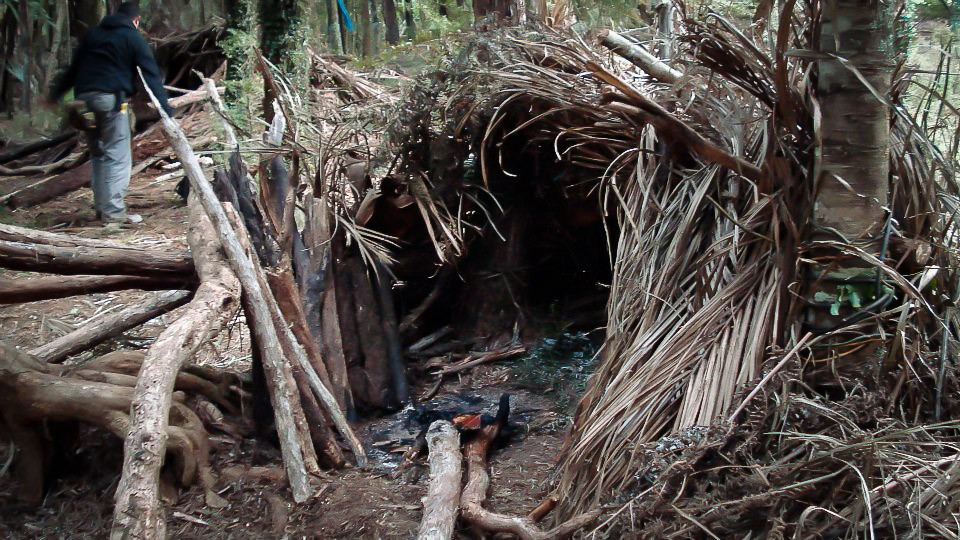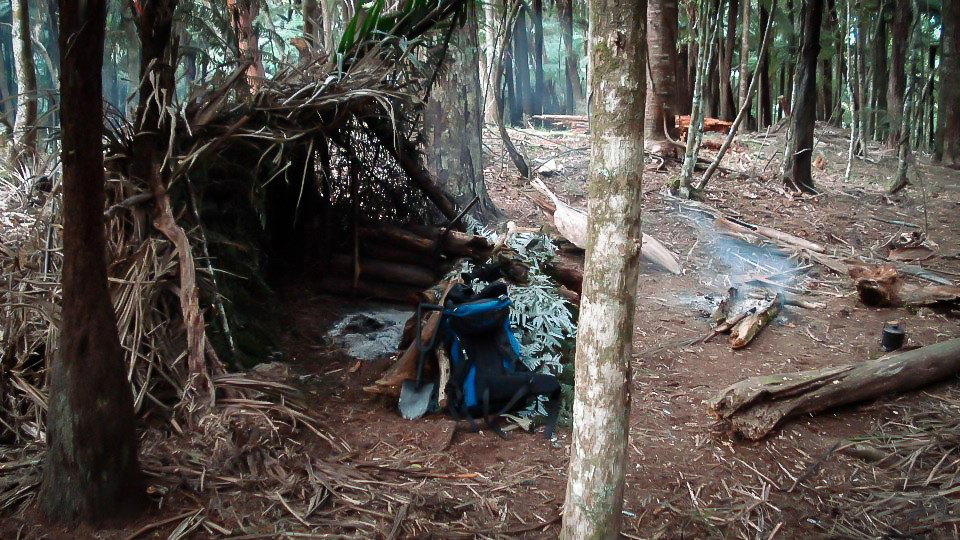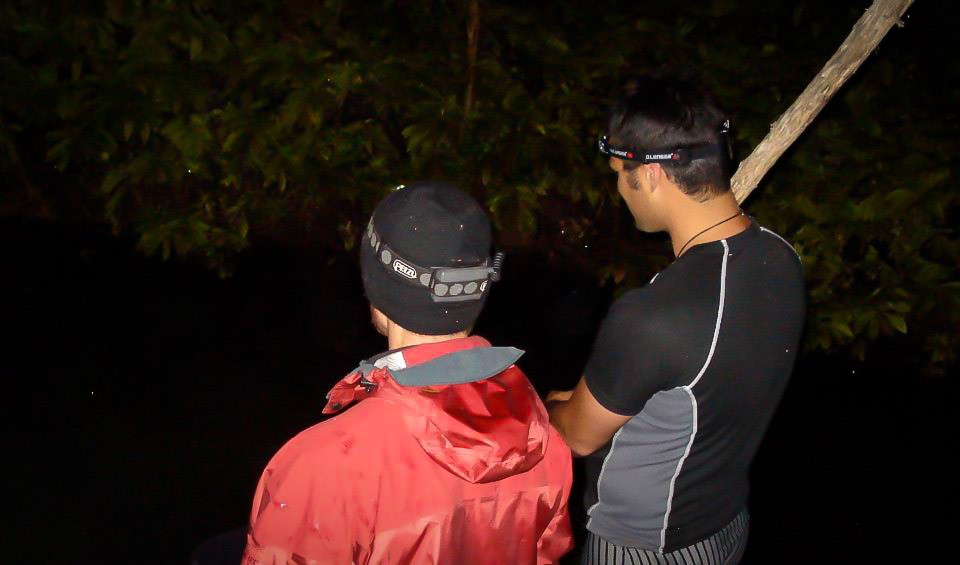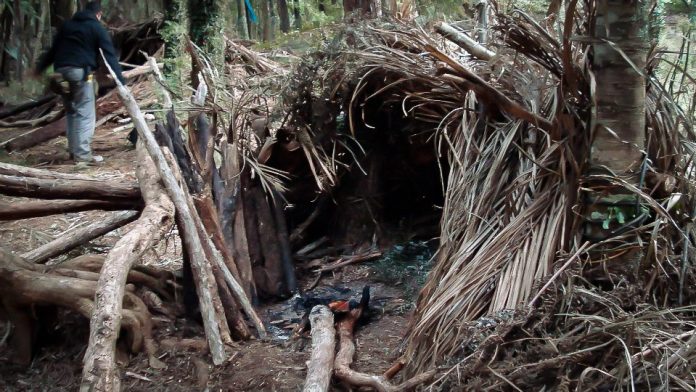It’s nice to know, that IF something should go wrong in the great outdoors (and there is plenty that can) – I have the survival training to be able to make do with what is presented to me.
With this in mind, I have been keen for quite a while now to do a survival course – and the opportunity recently presented itself thanks to Stu at SOS Survival Training.
The course
Stu offers an overnight survival training course, where:
“You will receive professional training that develops your ability to survive in the NZ bush, using only the resources nature provides and your own resourcefulness.
You will be led through step-by-step the process of building natural shelters, how to light fires, collecting and purifying water, making traps and snares and preparing wild game for cooking.
When the training time is up you will spend the night on your own or in a pair under a natural shelter you constructed earlier in the day. You will be expected to maintain your survival fire throughout the night.
This realistic survival scenario will be achieved will minimum equipment to test your new-found skills.
This program is not designed to test physical toughness, but to increase your knowledge through experience.”
Stu spent nineteen years in the Royal New Zealand Air Force where he became the Senior Instructor of the RNZAF Survival Training Center responsible for training staff in survival training for RNZAF Flight crew personnel. With a pile of other experiences and knowledge under his belt, he is extremely well qualified to provide survive training in the bush.

Our party of four, consisting of 3 participants; Jeremy and Joe (two arborists), myself (weekend warrior) and Stu. We met up out towards Kumeu where Stu has a large amount of bush terrain available for conducting the survival training. We headed down to a semi-permanent tee-pee structure when he explained what we could expect for the weekend.
We were presented with our survival gear – part of the challenge was making do with somewhat minimal equipment. A belt which would carry our survival knife, canteen and cup, and basic survival kit, which included fire making tools, survival blanket, paracord and a poncho. In addition we were issued a map, which was to be used for the navigation section on the second day. No tents, no sleeping bags, certainly no gas cooker and french press.
Off we head
With our kit sorted, Stu lead us down the path to an area where he demonstrated the basics of creating a natural shelter, also known as a debris shelter. This is what we were going to be building ourselves, and sleeping in.
After a bit of practice, we headed off into the area where we would actually be staying for the evening, all along the way, Stu was pointing out useful plants and trees, and generally imparting some of this gained knowledge. As a bonus, having Jeremy and Joe along (both arborists), a pile of information regarding New Zealand’s trees was delivered.
Upon arriving at our destination, we first had a lesson on fire building. My one tip – dry tinder! Despite Stu actually telling us to collect and try to dry some tinder while we headed towards our spot, he was the only one to actually do so – this meant getting a fire going using only gathered materials and a fire-steel was very difficult, and I resorted to a Vaseline soaked cotton wool bud out of the survival kit. Processing firewood (my Svord 370BB fairing very well with batoning), getting everything ready and getting it lit was all covered.
Once that was done, we all went off in our own directions to create our shelters for the night. In hindsight, I built mine in a bit of a low spot but I was close to a lot of debris and resources, so didn’t have to walk far to gather everything I needed. After a couple of hours of building, and collecting firewood, we rejoined to talk about food.
Or, more correctly, trying to catch food.
In a survival situation, food is actually not at the top of the list of priorities. However, once you have first aid, shelter, fire, signaling and water sorted, its not a bad idea to think about what you are going to eat. In our case of survival training – it was trying to catch something – creating some snares and nets.

A bit more time gathering firewood (it takes more wood than you would expect to keep warm all night), and it was nighttime – so we headed off to a nearby stream to see what we could catch for dinner. Stu pointed out that the required snares to catch ratio was something like 30:1, meaning in a true situation, you need to put out a lot of traps and effort, to often catch very little.
An, entertaining, if not overly fruitful expedition later, we returned to camp, ate our catch (a couple of Freshwater-Crays), and headed back to our shelters to light the fires and try to get some sleep.
Sleep. Kinda.
Well, essentially, the night was spent worrying the fire was going to go out, drifting off, then waking back up when the fire nearly did go out, and you started getting cold.
Interestingly, I didn’t find the ground all the much uncomfortable, I attribute that to sleeping on a futon most the time, however, my feet did get cold. At that is what kept waking me up. However, the fire did it’s job, and waking up particularly cold at 4am in the morning, I brewed myself a nice hot cup of water, and snatched another half hour of sleep.
Dawn came, and surprisingly, I felt relatively OK. I had survived a night in the bush without my warm down sleeping bag!
We all gathered at the main camp, discussed our night, and were already planning improvements to our shelters!
After dousing the fires well, and saying goodbye to our shelters, we headed off, ready for the next part of our Survival Training – navigation.
I have already done some navigation training – but this was a great change to practice, and we were presented with a great challenge – leapfrog bearing navigation, through some ridiculously thick New Zealand Bush. Think along the lines of so much supplejack that you end up crawling through a web of it. We took turns heading out, waiting for the person with the compass to tell us if we were heading the right way, then leapfrogging to make progress. After quite a bush-bashing mission, we actually managed to get relatively close to our intended position – our initial camp.
We headed back to the tee-pee, where Stu gave us a quick debriefing, then a quick demonstration on building a signalling fire, and a solar still.
With our heads full of information, and fairly tired bodies, we headed back to the truck, and out of the bush.
We survived!

I think, for me, the greatest aspect of it all was being able to practice some of the theory that I have read, in a safe, monitored Survival Training situation. Despite being surrounded by bush, and therefore immersed in the scenario, I came away with the feeling that Stu had also been keeping a good eye on everyone, right through the night. It was good to be able to put some of my learnt theory into practice – and I already want to get back out there to do it again.
For this trip – I left the camera at home – as I wanted to primarily participate, rather than stand back and take photos – but I will be heading back out sometime soon to take a pile of snaps and video – trying to capture some of the wealth of knowledge that Stu has to share on survival training.

